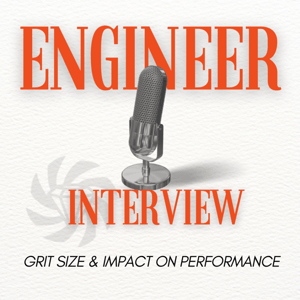The further I probe into the world for the best grinding wheels, the more I realize just how many considerations must be taken in the selection process. One of the many components of creating a custom wheel is abrasive selection, and more specifically choosing a grit size. There are several abrasive options available and each comes in different sizes, ranging from 60 grit (US size) to 6000 grit (or 1 micron in diameter). But what are the criteria for selecting an opportune grit size? Let’s investigate the ways grit size can affect grinding wheel performance with a wheel expert, John Coleman.




